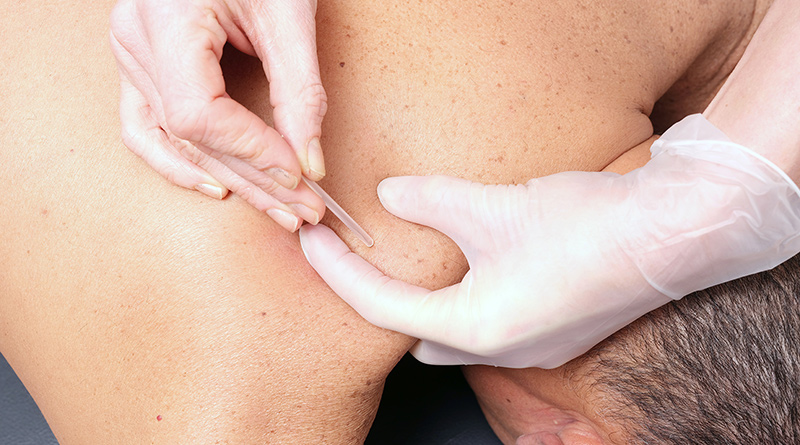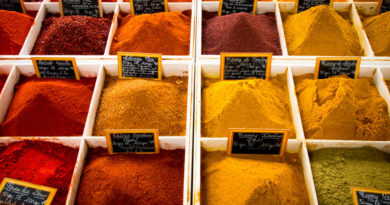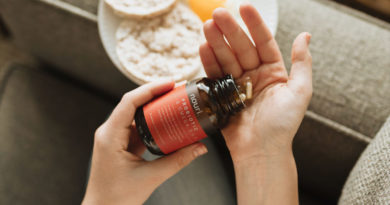What’s The Difference Between Dry Needling And Acupuncture?
In the past, patients have told us that acupuncture has been a very helpful form of pain relief for them. However, a lot of times, they tell me that they have previous experiences where physical therapists will put needles in places where traditional acupuncturists usually don’t put them in.
Actually, we know about non-acupuncturists who practice a type of needling procedure, much like acupuncture. It is called dry needling. However, patients find the treatment much painful than traditional acupuncture, so they were hesitant to come back and try the treatment again. But first, we need to ask:
What is Dry Needling?
Developed in the late 1970s, dry needling is a technique where needles are injected into sore or aching muscles to alleviate pain. The dry needling practitioner will insert the needles into trigger points or tight muscle tissue. When these trigger points are needled, it generates a “twitch” in the area: due to reflexive signals transmitted from the spinal cord, the muscle will involuntarily “jump” or contract causing the muscles to relax, thus alleviating pain. Depending on state laws, dry needling may be performed by chiropractors and physical therapists.
What’s the Difference between Acupuncture and Dry Needling?
Basically, what dry needling practitioners practice when they perform dry needling is basic acupuncture. The technique in which a needle is directly inserted into an area is painful upon palpation is discussed in the outlined in the Huang Di Nei Jing, the earliest text about acupuncture and Chinese medicine, written around 400 BC.
Here are some of the advantages of acupuncture over dry needling:
• While acupuncture is based on the meridian system, dry needling targets knotted muscle fibers and trigger points. Chinese medicine practitioners use the meridian system to map out Qi (energy) to all the tissues and organ systems of the body. Acupuncturists alleviate pain by stimulating acupoints along certain meridians, usually the needling site is remotely located from the area of pain. This basic aspect of Chinese medicine is not taken into account in the practice of dry needling.
• Acupuncture treats both the symptoms and the underlying causes of pain while dry needling only addresses the symptoms. Shoulder pain can be caused by a problem in your elbow or it can be due an issue in or near your spine. It may not be always helpful to needle the painful area since Qi stagnation in an energy channel or meridian is basically caused by pain anywhere along that energy channel. Moreover, Qi stagnation may be caused by a variety of factors. It may be due to heat or cold in the meridian, it could be caused by blood stagnation, it could be due to poor nourishment of Yin and blood that can result in frequent strained muscles or it could be an emotional constraint that blocks Qi from flowing smoothly through the meridian? If you have Liver Qi stagnation or Yin deficiency, dry needling won’t be able to treat these problems nor can it be a way to prevent health problems. These are some of the reasons why acupuncture treatments tend to have longer lasting effects.
• Besides relieving or eliminating pain, acupuncture can also address conditions that would fall into what is considered internal medicine. It could treat things like flu, anxiety, infertility, high blood pressure, digestive problems and many more. The only use of dry needling is for the relief of muscle pain and other orthopedic issues.
• Dry needling can be a bit painful because it causes the muscles to twitch, which can be uncomfortable to some. Acupuncture rarely causes pain and is a very relaxing therapy.
• The quality and level of training is quite different between licensed acupuncturist and dry needling practitioners. Chiropractors and physical therapists can administer dry needling within less than a whole day of training. It’s basically a workshop or a course in complementary therapy quite different from the basic methods of physical therapy and chiropractic medicine. Acupuncturists are required to finish a 4-year study in Oriental medicine and acupuncture in order to obtain a certificate or license to practice. In addition, they are trained to formulate a diagnosis and a treatment plan according to Chinese medicine, and integrate herbal medicine when required.
Conclusion
Compared to acupuncture, dry needling has less to offer patients who require treatment that goes beyond the relief of muscle pain. Acupuncture was developed over 5000 years of trial and error methods. It is a very versatile treatment that can be used for a wide variety of health problems. Unfortunately, the minimal training that chiropractors and physical therapists need to practice dry needling leaves to wonder if it’s a completely safe treatment.
Today there are many licensed acupuncturists offering dry needling treatments for muscle tightness and pain, providing patients with the peace of mind knowing they are in the care of a fully trained practitioner in acupuncture and Chinese medicine.



